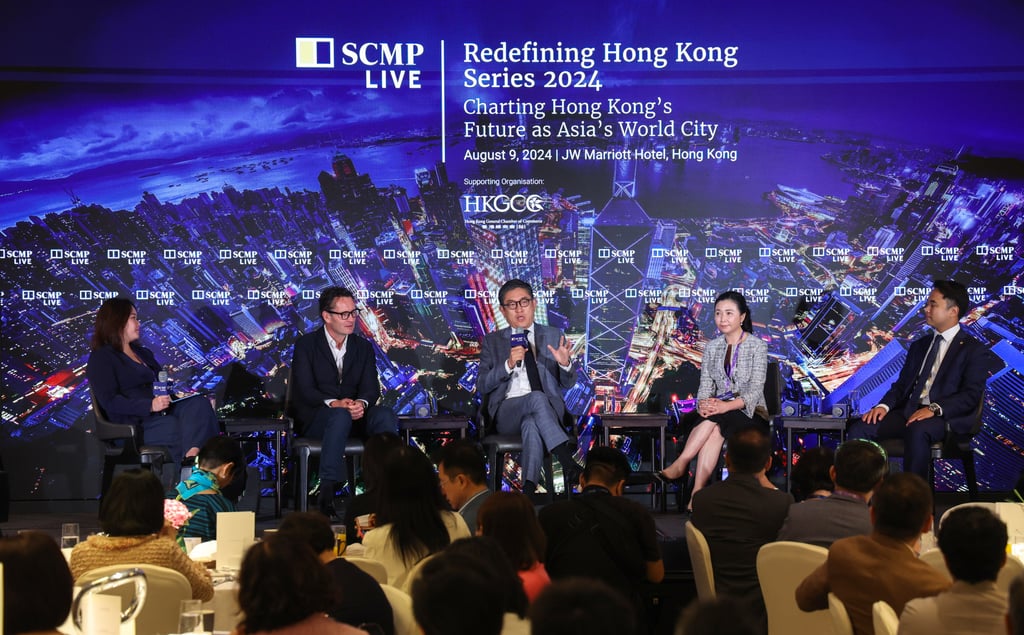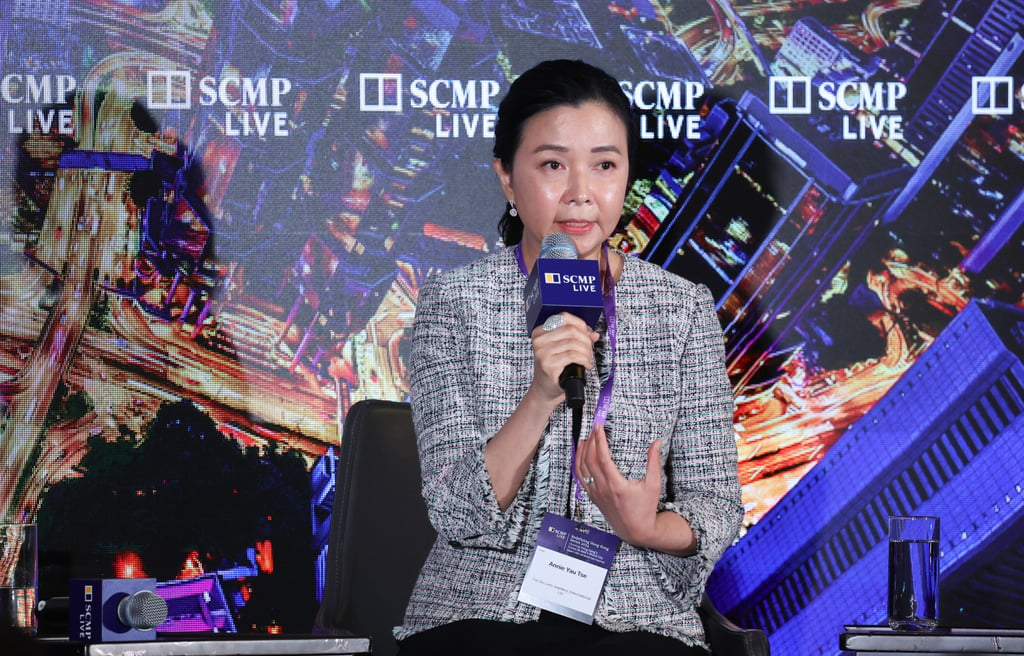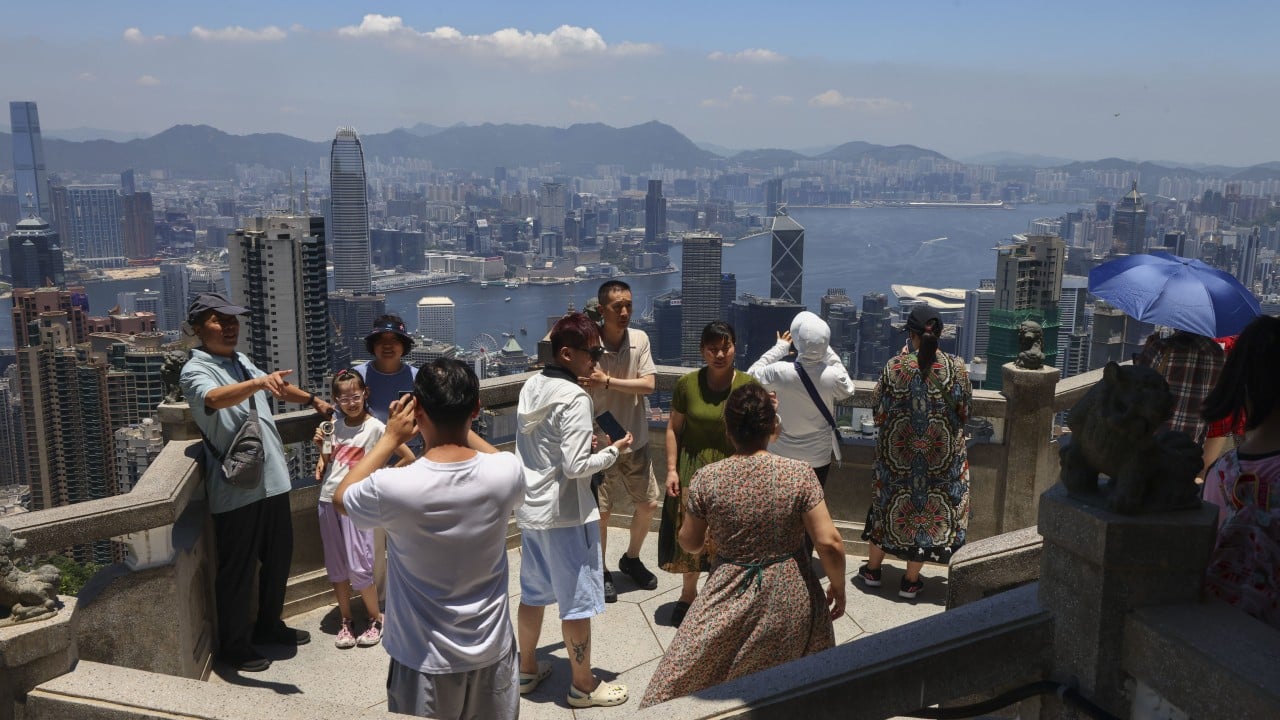“Twisted perceptions” of Hong Kong have added to the city’s challenges in bringing back long-haul visitors, the head of the Tourism Board has said, pointing to ongoing flight capacity struggles and changed spending habits as further pain points.
One industry leader also said on Friday the “devastating” retail situation could continue well into next year, but measures such as the recently increased shopping tax threshold for mainland Chinese tourists could make the city more competitive.
Tourism Board executive director Dane Cheng Ting-yat and Hong Kong Retail Management Association chairwoman Annie Tse Yau On-yee were both speaking on a panel at the Post’s Redefining Hong Kong conference.
“We are facing a more challenging situation than a lot of the other places, and it’s not just about Covid,” Cheng said.
“It’s a lot of twisted perceptions about Hong Kong, and that is the thing I think is most difficult for us to deal with, particularly in the long-haul markets.”
But he said those who did make the journey enjoyed their stay.
“Visitors are happy from what they’ve seen and when they visit … The important thing is to get them to Hong Kong.
“That includes [key opinion leaders], media, and a lot of people.
“Get them to come to Hong Kong, then they will say, ‘Oh, fantastic, Hong Kong is not like what I thought.’”
He said a shortage of flight capacity between the city and long-haul markets added to the difficulty in attracting travellers, as they had to pay “top dollar” for airfares.

Cheng also cited changing tourism trends affecting Hong Kong and other parts of the world which meant shopping and retail were “unfortunately, no longer the reason for people to travel” to certain destinations.
“And I think we are going through a difficult stage … I can see that retail, dining, a lot of industries are going through this transition.”
Industry leader Tse agreed that “all the shoppers are gone” and had been replaced by a new crop of budget-sensitive visitors who instead enjoyed taking photos to put on social media.
Government figures showed the value of retail sales has been falling since March, with provisional numbers for June indicating a 9.7 per cent drop year on year.
Asked whether she saw a rebound on the horizon, Tse said it was going to “take a long time” and would depend on a number of external factors such as whether the US would cut interest rates later this year, which could make Hong Kong’s currency more affordable due to its US dollar peg.
“I foresee that the decline will continue until the end of this year, or even until early next year … But now, we see the downturn is really devastating,” she said.

Tse added it was important for the sector to find its positioning, such as by transforming the city into an “experiential shopping paradise” by making use of tools such as new technology.
She also pointed to the recent increased threshold in duty free shopping for mainland tourists visiting Hong Kong.
Beijing in July raised the amount from the previous HK$5,400 (US$693) per trip to HK$12,900, or 12,000 yuan. The limit can be further increased to HK$16,100, or 15,000 yuan, if shoppers buy from duty-free stores at border crossings.
But the amount was still significantly lower than the 30,000 yuan the industry had asked for.
Tse said she was not disappointed by the outcome.

“If we can attract a person to come to Hong Kong 10 times … the limit will become 120,000 [yuan] per year, which is even higher than Hainan,” she said, referring to the mainland’s southern island province, where visitors can enjoy a tax-free limit of 100,000 yuan annually.
The key was to make sure people visited often, especially those within the Greater Bay Area who could go on day trips to do some “casual shopping”.
Mega events could help lure frequent visitors, while the city also had to focus on being “really vibrant” with “a lot of happenings”.
Tse said the upgraded duty free amount failed to cover most luxury items, but it was still able to benefit “the majority of the retail industry”.
“So it’s a very big help,” she said.


